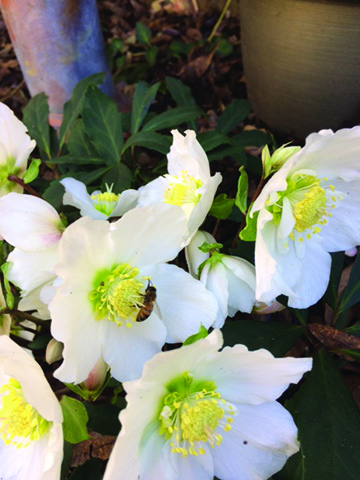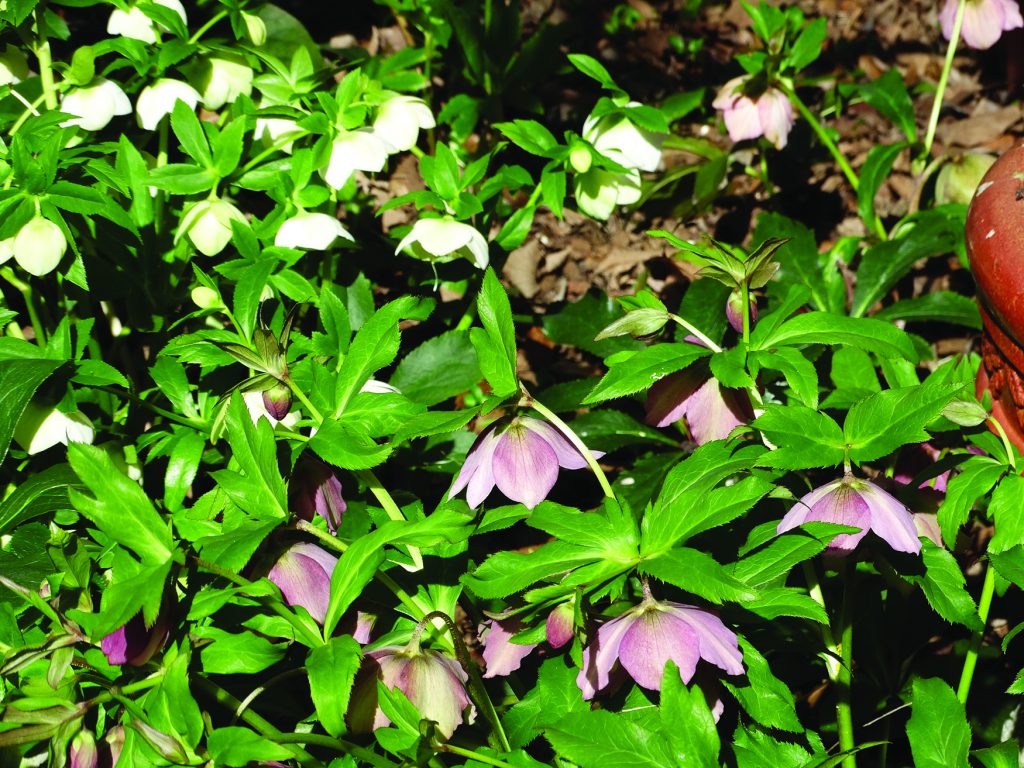I love pass-along plants and quite a lot of my garden has come from garden friends and family members that have either propagated their plants by cuttings, dividing or from seedlings or gathered seeds. Each plant usually has a bit of family history or a shared memory that is now part of my garden with my Hellebores being my favorite memory.
Hellebores sometimes known by their common names, Christmas Rose or Lenten Rose, are perennial plants that flower in various shades of white to pink to purple blooming from early winter to spring perfect for moist, semi-shaded areas. It is the one perennial that comes into bloom long before the rest of the garden begins to stir… good for the soul of a gardener and for pollinators looking for that winter snack.
The botanical name of the Lenten Rose is Helleborus orientalis and is closely related to the Christmas Rose, Helleborus niger that blooms a little earlier. They are not in the rose family, but are related to our buttercup; and, both are in the ranunculus family…but enough of the technical stuff. They are easy to grow tolerating a wide range of soils from dry, rocky to moist. They prefer well drained alkaline soil making them perfect for our red clay. And in the right spot, they will spread very quickly, propagating itself from seeds it throws off making them the perfect pass-along plant.
That’s how I met Maggie at the Anderson Flea Market about twelve years ago. She is a Master Gardener who snips, clips and digs up everything and anything that is green; and, would give away more than she would sell each Saturday morning. She is now my friend and Hellebore expert that believes they are the ultimate plant. They are easy to grow, flourish in the shade, bloom in winter, tolerate drought are disliked by deer, and nearly live forever. They come in shades of purple, pink, yellow, snowy white, singles, doubles, splotches, freckles, veins, and picotee edges; and, hybridizers are introducing new selections every year like the ‘Gold Series’. But the best thing of all she says is that they are prolific winter bloomers and are beautiful. Her pass-along Hellebores adorn many gardens throughout the area.
In the garden they are naturally cross-pollinated by insects. The ripened seeds fall to the ground in June and July and produce many seedlings, usually around the base of the mother plant. The seedlings will start blooming in 2 to 3 years. For the gardener that does not want seedlings, the newer varieties like the ‘Gold Series’ do not propagate by seeds giving you a little more control in your garden beds.
But for me the traditional Hellebores have quickly added color and beauty and nectar for pollinators in my shaded gardens and woodland areas. Just do a little homework first before accepting any pass-along plant making sure it’s not too invasive for your garden. And remember what Maggie says that the Hellebore is the ultimate plant that truly turns winter into spring.♦



